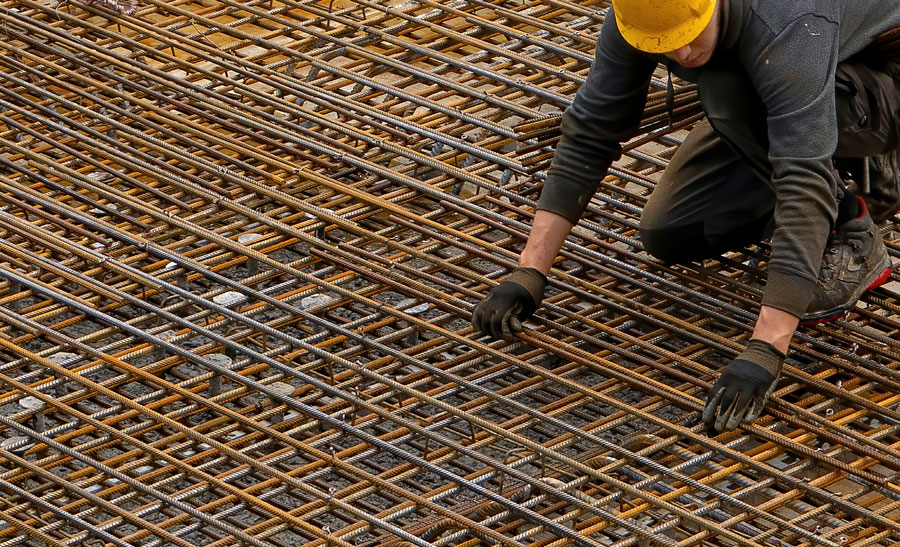Protecting your hands from injury starts with the right gloves

Being equipped with the right tools is essential to protect your employees, yourself and your business against unnecessary risks and harm. An appropriate toolkit should always contain suitable protective equipment, however, not all personal protection equipment, commonly referred to as PPE, is the same.
When it comes to preventing injury to our hands, it is essential to ensure that the PPE gloves worn match the task at hand. When considering the appropriate protection, it is necessary to know what hazards the wearer could be exposed to on the worksite.
For instance, are the gloves required to be cut-resistant, protect against electrical harm, withstand chemicals or heat burns, resist abrasion, or reduce vibration impact?
Based on the activity being performed, the right glove will require the right material. The most common materials used in PPE gloves include the following.
Types of work gloves
Fabric gloves
Cotton or fabric gloves that are designed for general protection. Whilst they are great for handling materials that may cause a splinter or scrape, or when needing to prevent smudge marks on glass, these gloves aren’t ideal to protect against heat or chemical burns, and can be punctured depending on the materials being handled.
These are also great options to protect against blisters or sun damage. Similar to cotton or fabric gloves, rubber-coated fabric gloves offer more protection than ordinary fabric gloves, and are typically used in gardening and landscaping, or handling pieces of timber that are more prone to splinters.
Leather gloves
Leather gloves are commonly used when you are searching for that extra grip or requiring an extra level of protection over fabric gloves. Commonly used by welders, leather gloves that are fitted right can protect the wearer from burns associated with welding flash - providing that a liner is used to offer the extra protection needed.
A common issue with leather gloves is their tendency to weaken when exposed to heat over a prolonged period. Accordingly, it is important to only wear leather gloves in good condition.
Plastic, latex and rubber
Plastic, latex and common rubber gloves are regularly seen in the medical field, however, are also used in the building industry when working with low-grade chemicals.
The firm fit of these gloves often allows for extra movement, which is important when the wearer requires mobility and full use of their fingers and hands, whilst ensuring appropriate grip.
Although these gloves are suitable to protect against bio-hazards, and should always be worn when dressing a wound on the worksite, as well as low-grade chemicals, they may lose their integrity when handling stronger chemicals or being exposed to low-grade chemicals for an extended period of time.
These gloves types are not puncture resistant and aren’t ideal for handling material that is sharp or abrasive, such as natural rock or timber.
Additionally, exposure to heat can damage these gloves and therefore they aren’t ideal for handling high temperatures. These gloves are typically disposable but are also available in reusable options.
Butyl gloves
These gloves are also rubber-based but, unlike plastic, latex and common rubber gloves, butyl gloves are designed to withstand harsher chemicals and also last longer, often being able to be reused multiple times when taken care of.
Butyl gloves are more resistant to abrasions than common rubber gloves, and also withstand varying temperatures.
Kevlar gloves
Kevlar® or stainless steel mesh gloves are a great option to protect against abrasion in industrial settings. Being cut-resistant but also offering mobility and use of the hand without unreasonable restrictions, Kevlar® material is a suitable protection solution when working with tools or in activities that are likely to abrasive injuries, such as sanding or handling sheet metal.
Similar to Kevlar®, stainless steel mesh gloves are suitable puncture-resistant gloves when handling sharps, particularly when additional hygiene may be required.
Vibration-resistant gloves
These gloves are designed to reduce the impact of vibration by transferring less energy from vibrations to your hands. This is particularly important when handling vibrating machinery for an extended period to prevent long term injury - a common occurrence in the building and construction industries.
Choose the right glove size
In addition to ensuring the correct material for gloves is selected, it is important to also select the most appropriate length for the activity.
A glove that is too short or small may not provide the appropriate protection, whilst a glove too long or large may compromise the safety of the wearer. Ensuring the use of the right PPE gloves can protect the work site from avoidable harm. It is always important to read the restrictions of each product as brands can differ in their resistance and tolerance levels to heat, abrasions and chemicals, despite the usual use of the glove’s material.
Getting the right PPE gloves can save time and money, but, most importantly, prevent injury and harm.
Explore our leading range of PPE gloves today
Jaybro carries a wide range of gloves for every workplace, from construction sites to warehouses, manufacturing plants and more.
Give our friendly safety team a call to find out the right gloves for your workplace.
 Sign In
Sign In 

